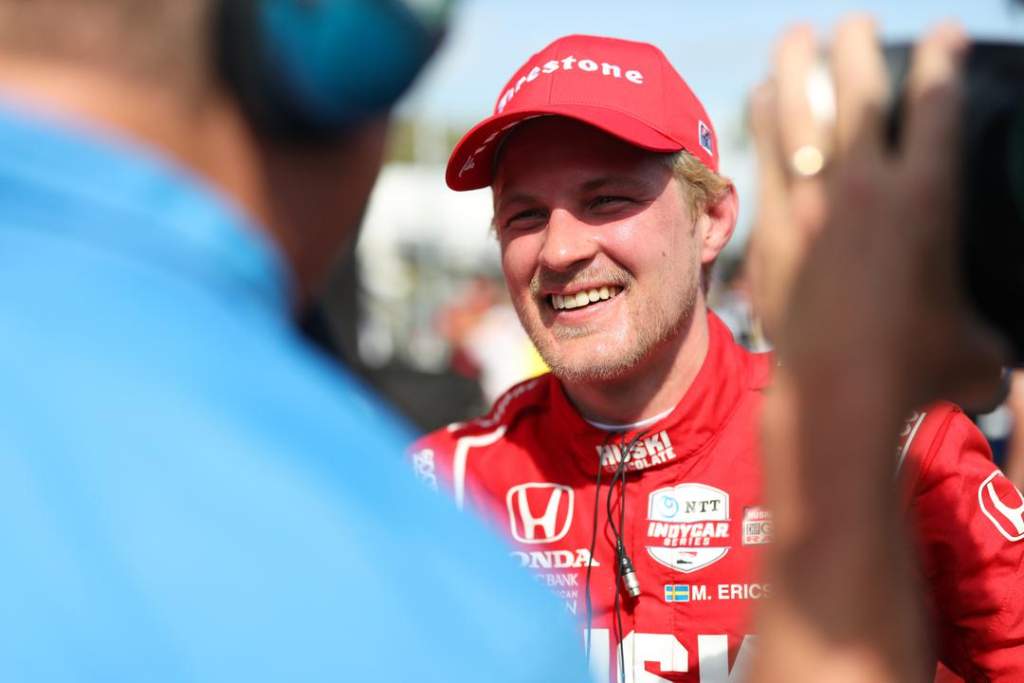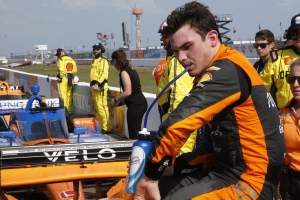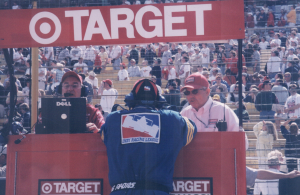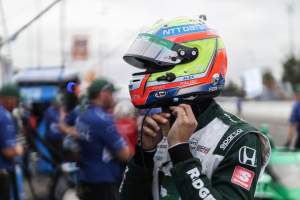When Marcus Ericsson took the chequered flag at St Petersburg, he wasn’t just scoring a huge victory for himself, he was showing just how silly any perceived stigma towards mental coaching in motorsport really is.
Ericsson may have won the Indianapolis 500 last year but he still feels that his achievements are underrated, and in a bid to improve his form even further this year, he enlisted the help of mental coach Stig Wiklund back in Sweden in the off-season.
Wiklund has worked with all sorts of sports stars including Olympians and has regular sessions with Ericsson to help him improve.
“I started to work with a coach this winter, because I wanted to find ways to improve and as people go to the gym to be stronger, I went to a mental coach to be stronger mentally,” Ericsson says in an upcoming episode of The Race IndyCar Podcast being released next week.
“So, I don’t feel like I have to hide that.
“I think it’s a strength to look at where you can improve and work on those areas.
“So I started work with a guy in Sweden [Wiklund] and we have sessions on a weekly basis. He’s helped me a lot in sort of mindset and how to think in different situations and how to control your mind and stuff like that.
“Stig said, this might take one month, two years, three years, everyone is different when you see results, but he’s been very impressed with the way I’ve sort of taken up on the stuff we’ve done.
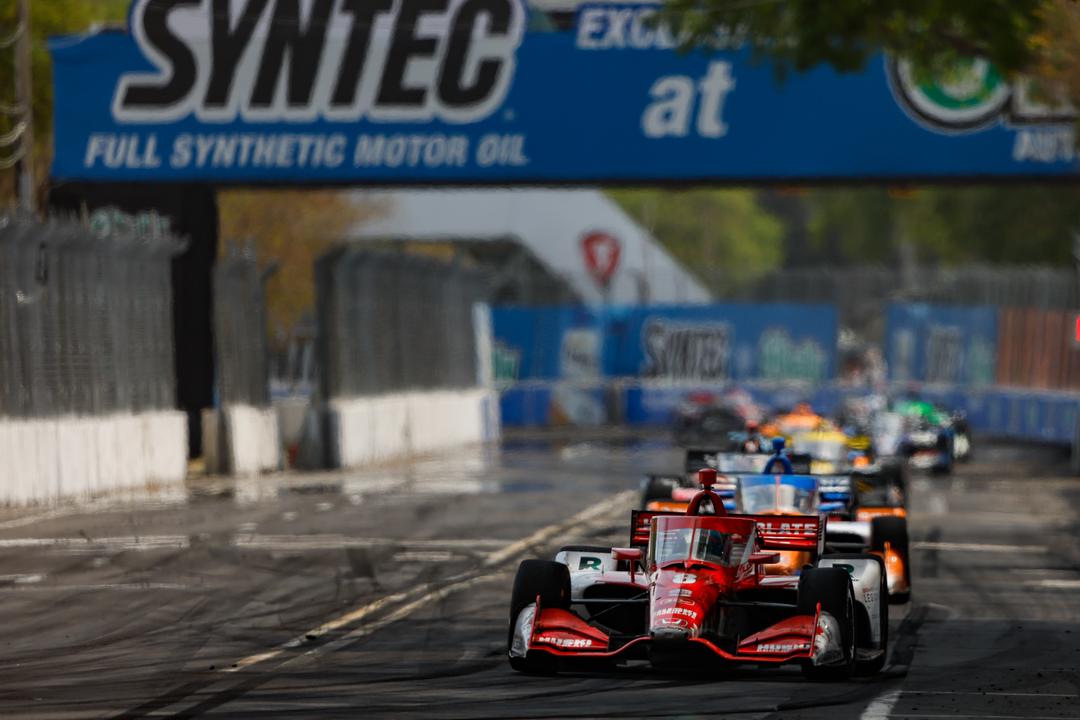
“One time is one time, we need to keep doing this [performing at a high level] over time to see, but it was definitely a good start. And it feels like the work we’ve put in and I put in together with him, it’s showing some results. So that’s encouraging.”
It’s so refreshing to see and hear a driver discuss this approach, because the psychology of sport and preparing mentally for big competitions is a massive part of almost every elite sport on the planet.
Except motorsport, seemingly.
Why does it still feel like using a mental coach is some sort of weakness for the opposition to exploit when it comes to motorsport, instead of just being treated like an extension of the preparation required to achieve your best in racing?
It’s fantastic that Ericsson is setting an example on this, for the additional reason that young drivers from karting upwards deserve to know that getting help with your mental approach is not a weakness for the opposition to exploit, but a place where you can make performance gainas and maybe even make off-track improvements too.
“I also feel like that, sometimes to some people, I’ve said it [that he’s working with a mental coach] and it’s almost like they react, ‘oh, you have a problem?’. And I’m like, ‘No, I don’t have a problem!’,” he says.
“I don’t go to the gym because I have a problem, I go there because I want to become stronger. And it’s the same here, this guy I’m working with now, he’s worked with Olympic champions, world champions, and helped them perform at their best.
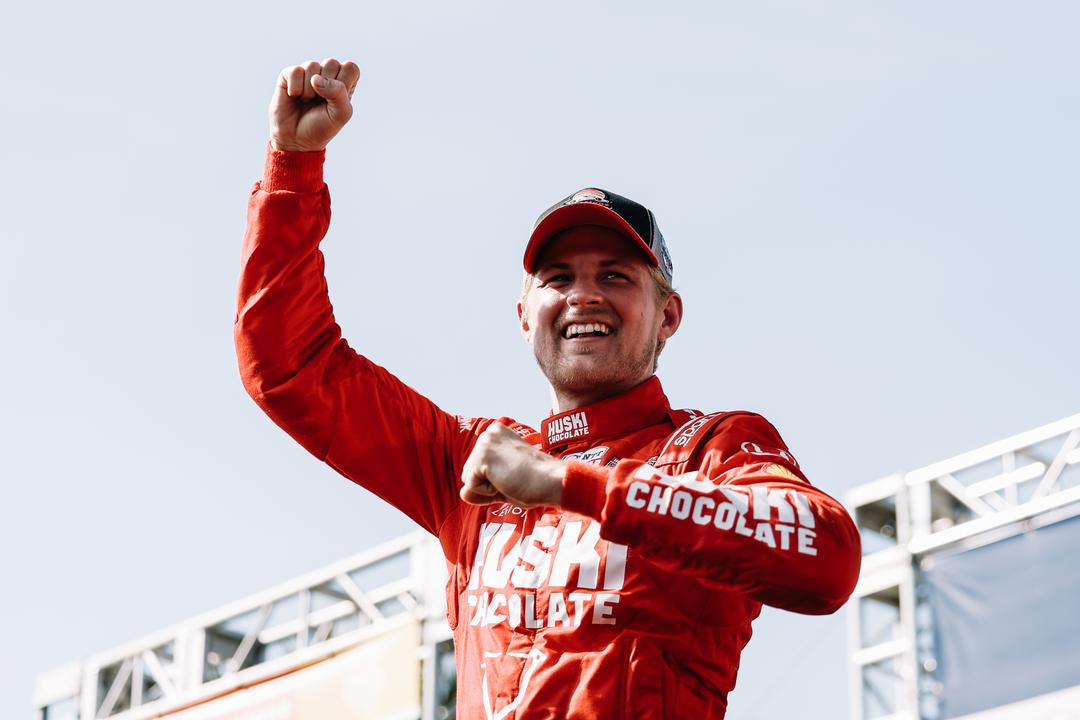
“Because literally, that’s what you want to do, you want to be in a mental state of mind to perform at your absolute best, to get everything out of yourself in the moments when it’s the most pressure and you have to deliver. It’s not easy.
“It’s easy to say, and it’s easy to say ‘yeah, I’m doing it’. But it’s another thing to actually do it. And I think, like you say, there’s a bit of a stigma around it, which I think is a bit strange.
“I’m happy to say I’m working on it. And I’m hoping it will improve me and make me a better racing driver.”
Already the results are plain to see. Qualifying has been an intense area of focus for Ganassi for years now, and even though street courses weren’t the weakest of the tracks IndyCar goes to for the squad, Ericsson’s race win was still set up by being much closer to the sharp end in qualifying than usual.
He had to use an extra set of soft tyres earlier in the stop-start qualifying session, and that meant unlike the three drivers who qualified ahead of him, he didn’t have fresh tyres to go for pole in the Fast Six shootout. But still, fourth was enough to fight for the win and that was one of the key things Ericsson wanted to improve.
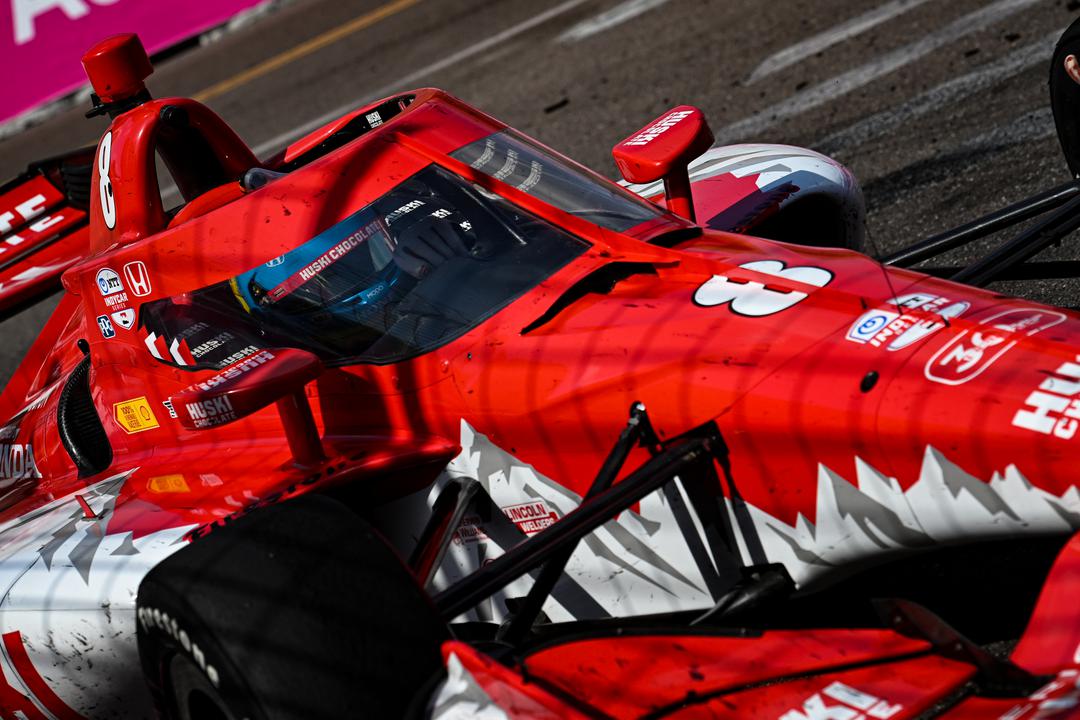
“It’s no secret from us that we’ve focused a lot on it and we’ve talked about it the last few years, that we feel like our racecraft and performance in the races is as good or better than anyone else,” adds Ericsson.
“But we’ve just had our qualifying average too low. So it’s hard to win championships when your qualifying on an average of 12 I think my average was last year [11.65].
“You need to get that at least in the top 10, I would say, ideally, around eight, to be in a good position to be able to score big points on race day.
“So that’s been a focus area, we’ve put a lot of effort in, both on set-up, understanding the tyres better.
“But also me personally, I’ve put a lot of work in to sort of try and find ways to just drive better in qualifying, be in a better mental state for qualifying sessions.
“All that work that the team and me and us together put in, I think already in Thermal [pre-season test venue] it shows because we were fastest over a lap in Thermal and I think that was a good sign for us as a group that, hey, what we’re doing, it’s moving in the right direction.
“I think it was the first time we were fastest in a proper session over one lap. So that was a booster for all of us.
“And then we went to St Pete and qualified in the Fast Six. Who knows what could have happened if we had another set of tyres in the Fast Six!
“But either way, second row of the grid, we were super happy with that, because we knew if we start up here, we can win the race on Sunday.”
Ericsson’s engineer Brad Goldberg – who has quickly become one of the most respected engineers in the paddock – gave a very simple answer when asked if Ericsson could have taken pole with an extra set of tyres.
“Sure!” he said.
Thankfully, after a chuckle, he did go on to give The Race a more in-depth insight on Ganassi’s qualifying work this off-season.
“Obviously that was quite a bit of effort, we aren’t hiding that,” Goldberg told The Race. “It was a focal part of the off-season, big time.
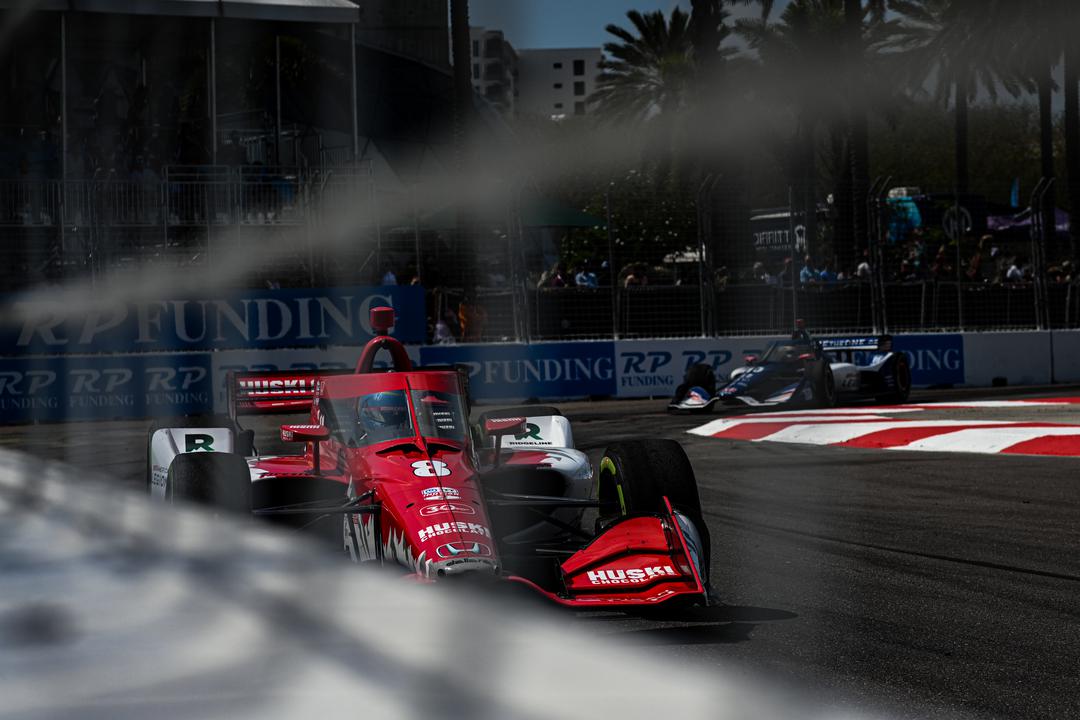
“If you look at where our struggles were last year, it was in qualifying. A lot of off-season prep went into it. This was one qualifying session of one race of the whole year, but yes, I think he’s quite pleased.
“Some of the things we worked on for qualifying in the off-season, I’d be lying if I said they hadn’t panned out, yes. That certainly has helped.
“I would have liked to have had a set of sticker alternates [new soft tyres] in Q3 to see what we could have done, I think we could have had something. The way Q1 worked out with the red flags, we had to take the chance and use the extra set to make it through. Pleased with the progress for sure.”
As he jumped out of the car after winning in St Pete and with adrenaline still pumping, Ericsson was quick to scold any doubters he has remaining about whether he can take second biggest prize after the 500, the IndyCar championship.
“I think people forget us in some conversations when they talk about the championship, “ he told NBC in his victory lane interview having just jumped out of the car.
Keep @Ericsson_Marcus in the @IndyCar title conversation this year.🏆 pic.twitter.com/nyDzTpBhBu
— INDYCAR on NBC (@IndyCaronNBC) March 6, 2023
Sure, adrenaline is high at that point and holding drivers to what they say when they’ve just jumped out of the car and had a microphone stuck in their face can often be problematic.
But this topic has run throughout Ericsson’s career as he is judged by the media and fans. There’s always a sense that he feels his achievements and performances aren’t interpreted in the correct way and that he and his team deserve more praise.
The Race asked if this was something Ericsson perhaps needs to do to fire himself up, one of the elements of his psyche required to perform at the top level, as The Race IndyCar Podcast hypothesised in its post-race episode.
“You jump out of the car after a race, you are pumping with adrenaline, but I still think it’s fair to say what I said, and I stand behind that,” Ericsson replies.
“I’ve used it as motivation and fire to show what I can do on track.
“I think that the stats speak for themselves. The last year and a half, I saw a stat that in the last 28 races, we’ve won four of them on the #8 car and I think that says quite a lot.
“Of course, we need to keep doing it, you’re never better than your last race, that’s how it works in racing. But I think we’ve shown now over time that we can be a contender every single weekend. So that’s great.”
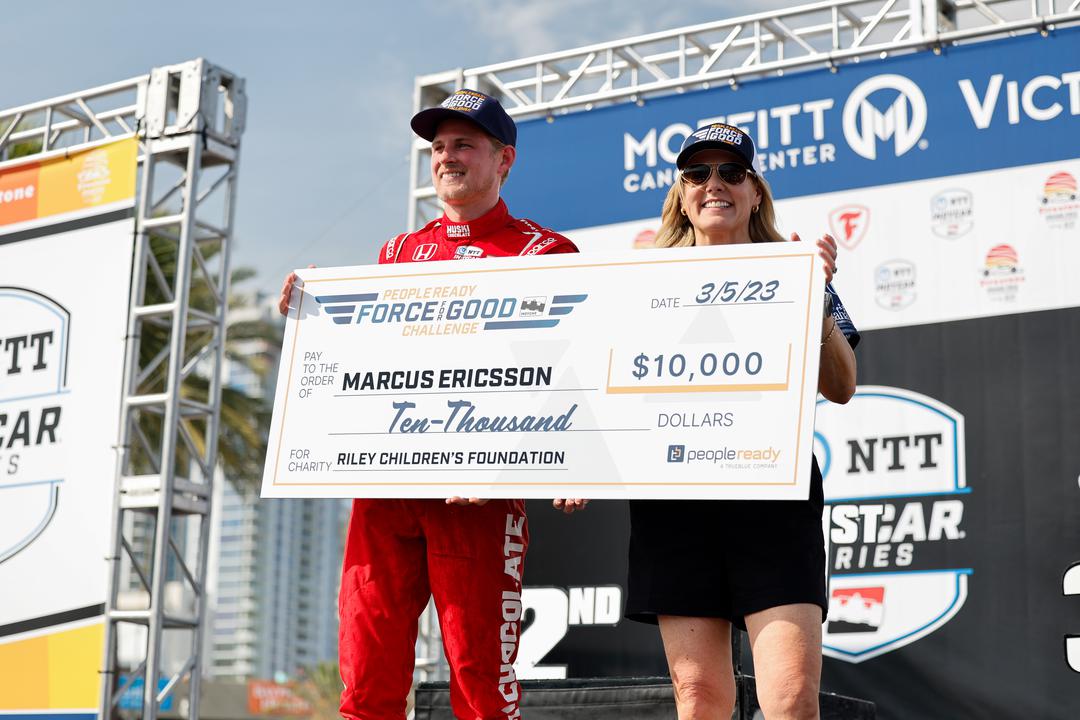
One area his victory certainly will have helped is when it comes to starting off a key year that will decide his IndyCar future.
He’s in the final year of his contract coming off the back of an Indy 500 win and a championship challenge in 2022, and he’s just started the new year with a win at the first time of asking.
The list of suitors for Ericsson will be long – probably the whole field – if he hits the market, but there’s no reason to suspect that will happen.
Ganassi is already facing uncertainty over Alex Palou and his possible move to Arrow McLaren for next year, while the current fourth car is shared between two drivers.
If Ericsson continues in this vein of form, Ganassi would be well advised to give Ericsson a blank cheque and make sure he’s committed for the long haul.
When he joined Ganassi, few could have expected Ericsson to become the juggernaut he has, and he and Ganassi are the perfect fit for each other.
The fact he keeps finding new ways to get better and better is only further proof that he can lead the team forwards.


